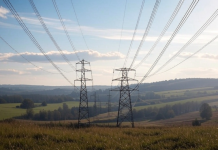Piezoelectric floor tiles are specialized tiles that utilize piezoelectric materials—such as quartz, ceramics, or polymers—that generate an electric charge when subjected to mechanical stress or pressure, like footsteps.
When someone steps on these tiles, the embedded piezoelectric substance converts the pressure into a small amount of electrical energy. This can be stored, used to power low-energy devices such as LED lights or sensors, or contribute to smart building systems.
See Video

How Piezoelectric Floor Tiles Work
-
- Mechanical Pressure: Footsteps generate stress on the tile.
- Energy Conversion: Piezoelectric materials within the tile, like lead zirconate titanate (PZT) or PVDF, convert this mechanical force into a small electrical charge.
- Energy Use: The resulting energy may be stored in batteries or used directly for low-power applications such as sensors or lighting features.
Applications
Piezoelectric tiles are most often installed in high-traffic locations like airports, train stations, shopping malls, and public walkways where many footsteps occur throughout the day. Despite the innovative approach, the amount of energy generated from each step is quite low, so they’re generally best suited for micro-energy solutions rather than powering large facilities.
Limitations
-
- Low Power Output: The energy produced per tile per step is modest and usually restricted to powering small devices.
- Cost: Specialized materials and installation can be expensive, which limits widespread adoption for large-scale energy production.
- Durability: These tiles must withstand high foot traffic and changing environmental conditions over time, which poses engineering challenges.
- Efficiency: High volumes of foot traffic are needed to generate notable amounts of electricity, making them best for busy public spaces.
Piezoelectric floor tiles represent a creative, sustainable solution for harvesting energy from human movement, especially useful for powering sensors and small LEDs in smart buildings or public spaces. However, due to the modest energy output and relatively high cost, their use is currently limited to niche applications rather than large-scale energy generation.
sources —
https://en.wikipedia.org/wiki/Piezoelectricity






